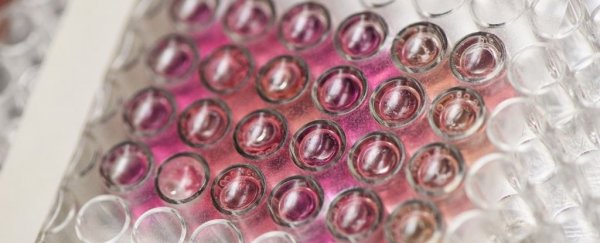Scientists are using a radar-like weather system to watch as a storm of pathogens brew inside living tissue.
The strategy is entirely novel, according to the authors, and relies on a technique very similar to Doppler radars, which can detect the motion of precipitation and predict upcoming weather patterns.
Doppler ultrasounds, which use sound waves to create images of blood flow, are already used in the medical sphere, but this new technique can allow scientists to peek inside individual cells to see how they respond to pathogens like salmonella and E. coli.
Such knowledge could one day allow us to quickly figure out whether living tissue contains microbes or not and successfully treat that infection.
In 2020, the team used similar biodynamic imaging to identify cancerous cells and test how effective chemotherapy truly is at beating them back.
"First we did biodynamic imaging applied to cancer, and now we're applying it to other kinds of cells," says David Nolte, who specialises in biomedical imaging at Purdue University.
"This research is unique. No one else is doing anything like it. That's why it's so intriguing."
Scattering light across living tissues results in a range of Doppler frequency shifts, which can tell scientists something about what is going on inside a living tissue's cells.
This Doppler 'fingerprint' as it is known is extremely sensitive to even subtle changes in intracellular processes, including bacterial invasion.
When bacteria infect a living host, it can alter the dynamics of the tissue's cells, allowing some to act as "sentinels", reporting on the pathogen's effects and its responses to antibiotic treatments.
These different frequency ranges can then be interpreted by scientists to better understand an infection's true character and how best to fight it.
To show how this technique works, researchers used a standard colon cancer cell line and introduced it to several food-borne pathogens to see how its first line of cells – the "sentinels" – responded to the different infections.
 The Doppler machine used to look inside cells. (Rebecca McElhoe/Purdue University)
The Doppler machine used to look inside cells. (Rebecca McElhoe/Purdue University)
Invasive Salmonella was found to penetrate through the cancer tumours, while non-invasive strains of E. coli remained isolated outside the cells. Both scenarios ultimately generated different Doppler signatures.
"This directly measures whether a cell is pathogenic," says biological engineer Michael Ladisch.
"If the cells are not pathogenic, the Doppler signal doesn't change. If they are, the Doppler signal changes quite significantly."
Using additional methods, researchers can figure out what pathogen is actually present within the living tissue. As Ladisch explains, it's "a quick way to tell friend from foe."
Once that work is done, antibiotics can be applied to the cell line, and responses can be tracked using a fluorescent dye. Doppler shifts can then reveal which infections are resistant to drugs and which respond well to them.
Using current techniques, where a patient's tissues are cultured in the lab, it takes between 8 and 10 hours to figure out whether an antibiotic will work or not.
In roughly half that time, this new 'biodynamic process' can test multiple different medicines in tiny Petri dishes to see whether there have been any metabolic changes.
Those samples that do show changes are the ones that have reacted well to the antibiotic, the authors say, meaning "the bacteria are dying, being defeated and beaten back by antibiotics."
"When we treat with antibiotics, the bacteria don't have to multiply much before they start to affect the tissue sentinels," explains Nolte.
"There are still too few bacteria to see or to measure directly, but they start to affect how the tissues behaves, which we can detect with Doppler."
The authors hope their new technique will allow doctors to prescribe personalised antibiotics, instead of broad-spectrum ones, which can leave some bacteria living, cause antibiotic resistance and make the infection harder to fight in the future.
The experiments were done outside normal biological context on artificially grown tissue, and because the equipment is sensitive to vibrations and movement, it's not clear whether this technique will translate to living and breathing patients.
That said, the authors hope they can figure out a way to counter their equipment's sensitivity, allowing infected tissue to be scanned on the outside of a patient's body and maybe even one day on the inside, too.
The study was published in Communications Biology.
